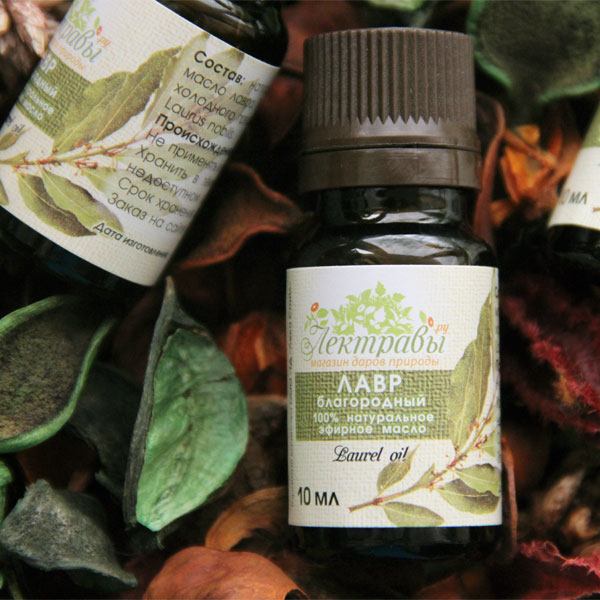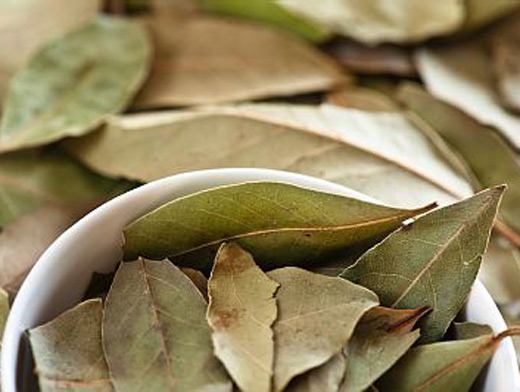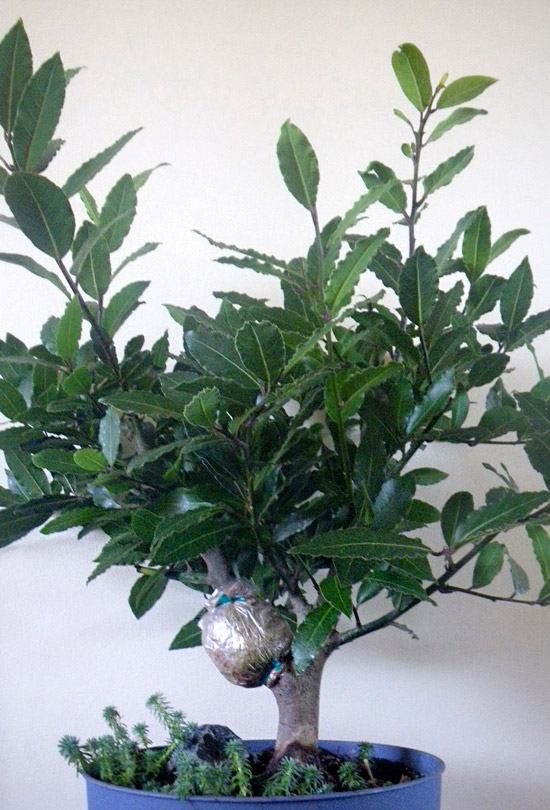The chemical composition of laurel differs from most spices with several interesting elements:
- Formic acid - a natural preservative and antibiotic, slows down the processes of decay;
- Acetic acid - a natural preservative, antibiotic;
- Butyric acid - provides energy to improve metabolism, protects the colon from diseases;
- Capronic acid (nothing to do with tights) - has hemostatic and anti-inflammatory effects;
- Melissyl alcohol - part of beeswax, protects the leaf from external influences;
- Lauric acid - increases the level of “good” cholesterol, has antiviral properties (for example, the HIV virus is enveloped, and a deficiency of such fatty acids like lauric acid contributes to their reproduction);
- Phytosterol - lowers cholesterol levels;
- Linalool - smells like lily of the valley, calms the nervous and cardiovascular systems;
- Camphor
- Starch
- Tannins
- Several aromatic components such as myrcene, limonene, cineole, and others.
Vitamins: Vitamin A (RE) 309 mcg, Vitamin B1 (thiamine) 0.009 mg, Vitamin B2 (riboflavin) 0.421 mg, Vitamin B6 (pyridoxine) 1.74 mg, Vitamin B9 (folic) 180 mcg, Vitamin C 46.5 mg, Vitamin PP (Niacin equivalent) 2.005 mg.
Micro and macroelements: Calcium 834 mg, Magnesium 120 mg, Sodium 23 mg, Potassium 529 mg, Phosphorus 113 mg, Iron 43 mg, Zinc 3.7 mg, Copper 416 mcg, Manganese 8.167 mg, Selenium 2.8 mcg.
Bay leaves stimulate appetite and have a diuretic effect. An infusion of bay leaves can be used as foot baths for excessive sweating (verified). These same baths can treat athlete’s foot. Oil , infused with bay leaves, disinfects and repels mosquitoes. The beneficial properties of laurel deserve a separate article.
To learn how to grow laurel at home, read the article Laurel at Home from Seeds on the Windowsill .



